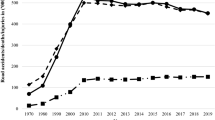Abstract
In Iran with its still vast oil reserves it is a particular challenge to ensure that the cities develop in a more sustainable way. There is little order in the way different land uses are arrayed across the urban landscape. Most Iranian big cities have vast tracts of informal, inadequate housing, their transport networks are filled to capacity and suffer intolerable congestion from cars, motorcycles, and trucks. At the same time, a considerable share of people cannot afford a car and depend on poor public transport systems and poor walking and cycling conditions. Most contemporary development, as opposed traditional development, is very car-oriented because fuel is so cheap. In many cases, urban planning is very ineffective and land uses scatter into areas that are entirely unserved by public transport. The transportation sector is the main source of air pollution in metropolitan areas such as Tehran, Isfahan, Shiraz, and Ahwaz and represents a serious threat to public health. This chapter discusses Iran’s urban transport official policy frameworks, the integration of urban transport and urban planning policies, environmental concerns, social justice and accessibility issues, public transport finance and decision making. While there is an increasing agreement over policies which might create more sustainable urban transport outcomes in Iran, there are severe obstacles to policy implementation, including a complex institutional structure and inadequate legislation. Recommendations include: harmonizing national and local government sustainable transport strategies; implementing car restrictions in cities nationwide; embracing carless doctrines in land use planning and prioritizing non-motorized transport modes; and establishing public transport priority development corridors.
Iran’s urban population (currently 70 % of the total) is increasing at an average annual rate of about 3 % and is expected to continue to do so during the next decade. The country includes one megacity (the capital, Tehran) and several large cities. Cities with more than one million inhabitants are categorized locally as “metropolitan areas”: Tehran (8.2 million), Mashhad (2.8 million), Isfahan (1.9 million), Shiraz (1.6 million), Karaj (1.6 million), Tabriz (1.4 million), Ahwaz (1.1 million), and Qom (1.1 million) (Statistical Centre of Iran (2012). The focus of this chapter is on these metropolitan areas, which have reached income levels that can support high rates of car ownership and usage. Tehran is the most densely populated metropolitan area and tends to influence transport policy on a national scale (Allen 2013).
Access this chapter
Tax calculation will be finalised at checkout
Purchases are for personal use only
Similar content being viewed by others
Notes
- 1.
These are the official cost projects released by the City of Tehran. The real costs will likely be higher.
References
Allen H (2013) An integrated approach to public transport. Case Study prepared for Global Report on Human Settlements 2013, Tehran. Available from http://www.unhabitat.org/grhs/2013
Atlastehran (2015) Tehran statistics. http://www.atlastehran.ir. Accessed Dec 2015.
Fazeli M (2014) City, transport and daily life. Tehran Municipality Press, Tehran
International Energy Agency (IEA) (2015) Key world energy statistics. https://www.iea.org/publications/freepublications/publication/key-world-energystatistics-2015.html
International Monetary Fund (IMF) (2011) Iran—the chronicles of the subsidy reform, prepared by Dominique Guillaume, Roman Zytek, and Mohammad Reza Farzin, IMF Working Paper, WP/11/167.
Isalou A, Litman T, Irandoost K, Shahmoradi B (2014) Evaluation of the affordability level of state-sector housing built in Iran: case study of the Maskan-e-Mehr project in Zanjan City. J Urban Plan Dev. doi:10.1061/(ASCE)UP.1943-5444.0000235,05014024
Jacobson MZ (2012) Air pollution and global warning: history, science and solutions, 2nd edn. Cambridge University Press, Cambridge
Land Transport and Authority (2014) Land transport statistics in brief, Singapore. http://www.ita.gov.sg website.
Moshiri S (2014) Energy price reform and energy efficiency in Iran. International Association for Energy Economics (IAEE) bulletin, pp. 33–37.
Soltani A (2014) Exploring the share of sustainable transportation sector in municipality development planning, the case study of Shiraz municipality. J Urban Plan Res 5(16):5–18
Soltani A, Ivaki YE (2011) Inequity in the provision of public bus service for socially disadvantaged groups. J Sustain Dev 4(5):229–236
Soltani A, Mozayani S (2013) Factors affecting the citizens’ trend to use pedestrian bridge in Iran. Manage Res Pract J 5(4):5–18
Statistical Centre of Iran (2012) The Statistical Yearbook of Iran (2011). Statistics Centre of Iran, Tehran
Taghizadeh, R. (2010) Sanctions and Iran's Achilles Heel. Rferl.org. Accessed 05 Feb 2015.
Zamanian Z, Nikravesh A, Monazzam MR, Hassanzadeh J, Fararouei M (2014) Short-term exposure with vibration and its effect on attention. J Environ Health Sci Eng 12:135–140
Acknowledgment
The author thanks his former students, Reza Piroozi, Mohsen Khazaei, Ahmadali Namdarian, and Majid Ansari for assistance with providing images.
Author information
Authors and Affiliations
Corresponding author
Editor information
Editors and Affiliations
Rights and permissions
Copyright information
© 2017 Springer International Publishing Switzerland
About this chapter
Cite this chapter
Soltani, A. (2017). Iran. In: Pojani, D., Stead, D. (eds) The Urban Transport Crisis in Emerging Economies. The Urban Book Series. Springer, Cham. https://doi.org/10.1007/978-3-319-43851-1_7
Download citation
DOI: https://doi.org/10.1007/978-3-319-43851-1_7
Published:
Publisher Name: Springer, Cham
Print ISBN: 978-3-319-43849-8
Online ISBN: 978-3-319-43851-1
eBook Packages: Earth and Environmental ScienceEarth and Environmental Science (R0)




